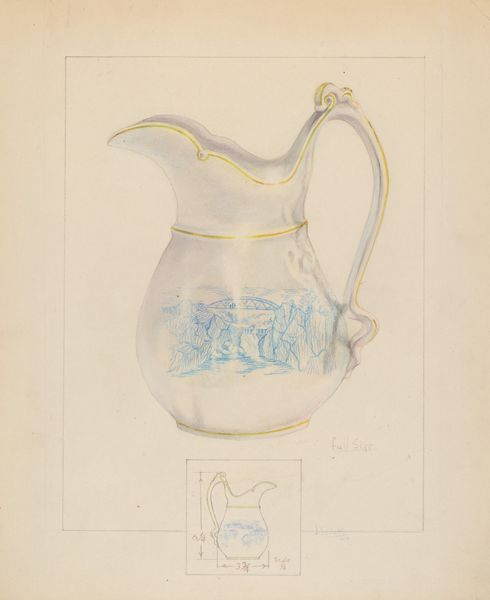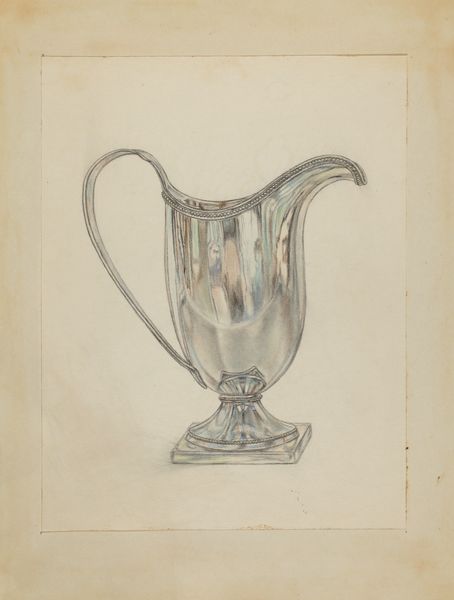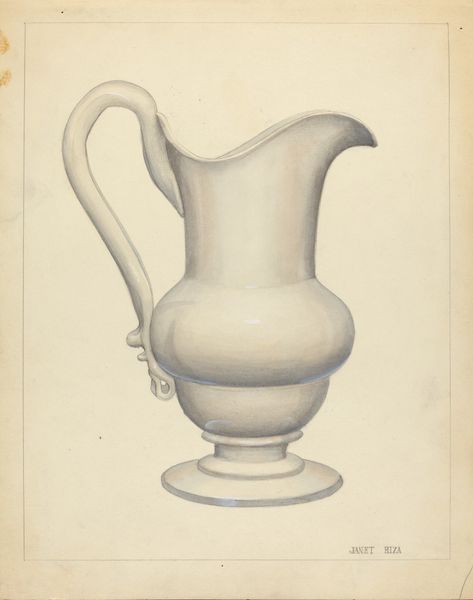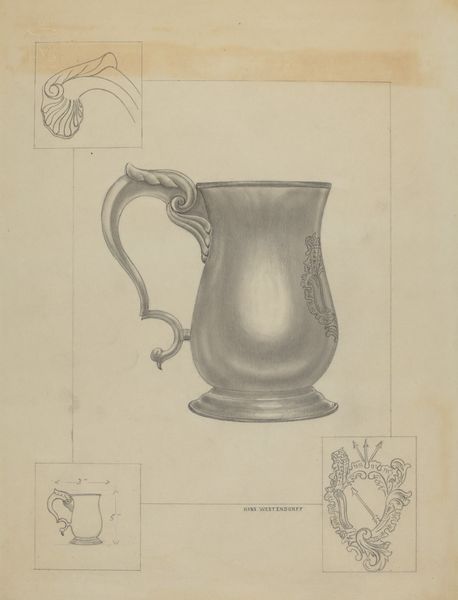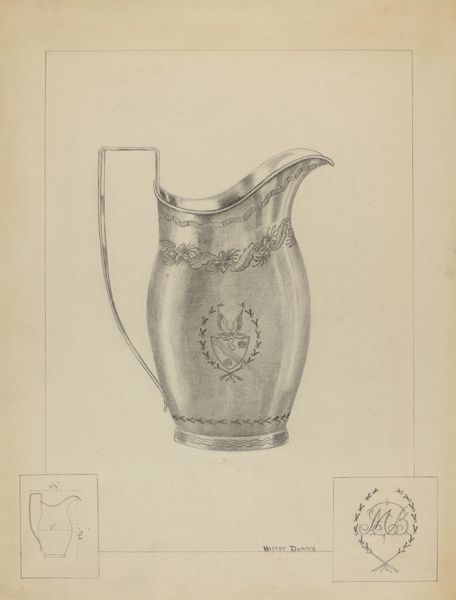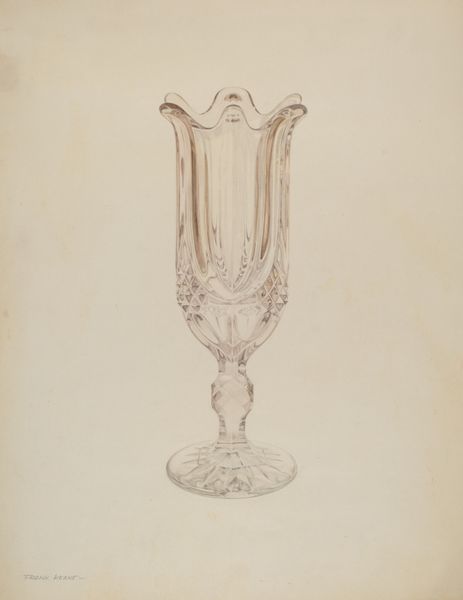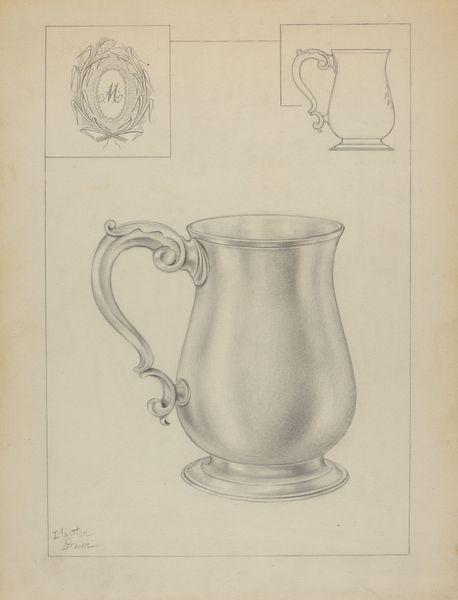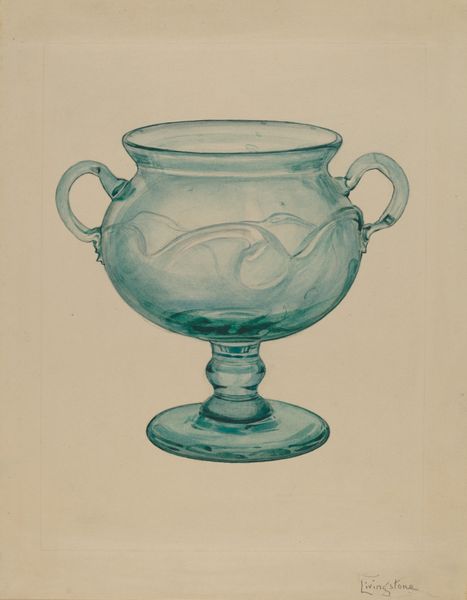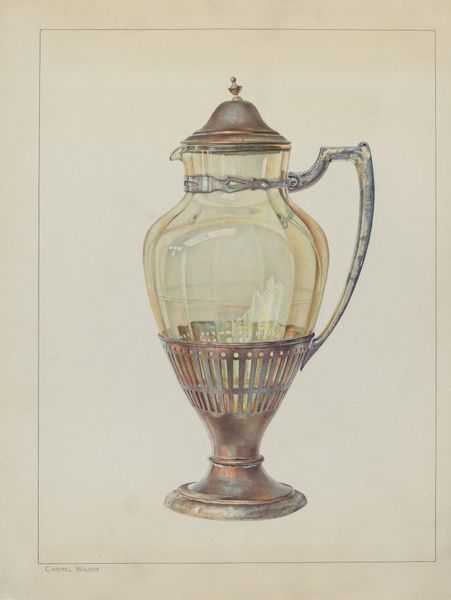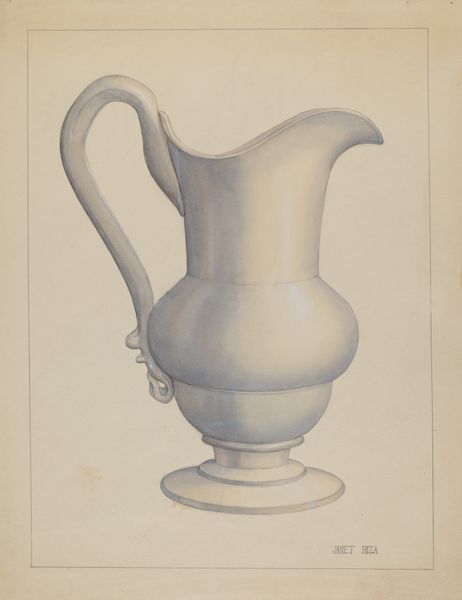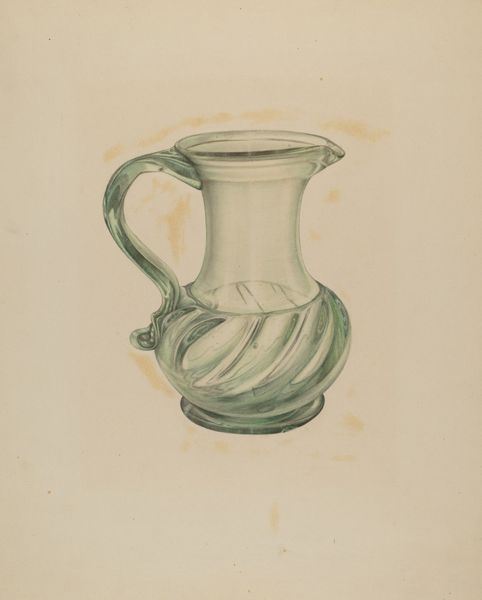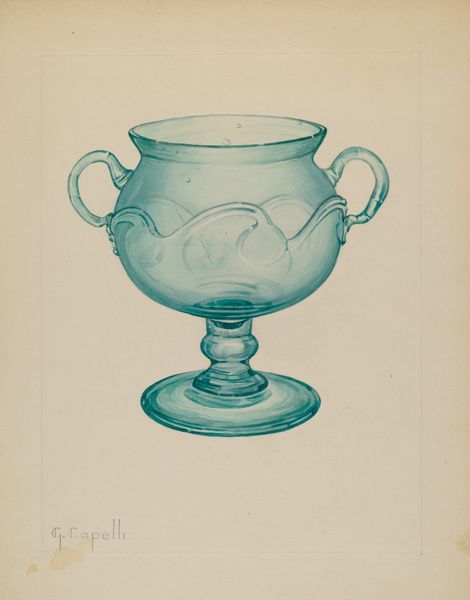
drawing, paper, watercolor, pencil
#
drawing
#
paper
#
watercolor
#
pencil drawing
#
coffee painting
#
pencil
#
watercolor
Dimensions: overall: 35.5 x 26.2 cm (14 x 10 5/16 in.)
Copyright: National Gallery of Art: CC0 1.0
Editor: So, this is Manuel G. Runyan's "Pitcher," created in 1937, a watercolor and pencil drawing on paper. It feels like a technical study, almost like a blueprint. What catches your eye in this work? Curator: What fascinates me is how Runyan uses seemingly delicate mediums like watercolor and pencil to document the means of production and the physicality of this pitcher. Look at the added sketches surrounding it; they draw our attention to details like floral designs. Are these the product of industrial design or the maker's imagination? Are they mass produced? These types of illustrations could indicate a product being planned. It's interesting how he brings the 'craft' of the illustration itself into question. Editor: I see what you mean! It's not just a pretty picture, it's about how the object is made, and its potential context as a mass produced commodity. The surrounding sketches feel less like artistic flourishes and more like detailed diagrams. It challenges that traditional distinction between fine art and everyday object. Curator: Exactly! It makes us consider who crafted the original, what materials, techniques, what market or person the object was created for. It brings the labor and history to the surface. Editor: This is so insightful, I originally perceived it as a simple drawing. It seems there's a subtle narrative about production, material, and access woven into its depiction. Curator: And remember, during the 1930s, discussions around craft versus mass production were very prevalent. By showcasing the “bones” of a future object, Runyan implicates himself in that production and also comments on its availability to be viewed by a wider population, because drawings are, in effect, reproducible through industrial printing processes. The watercolor acts to elevate the status of a base medium to mimic glass production, for example. Editor: Fascinating! Thank you for making me rethink art’s function in society through production.
Comments
No comments
Be the first to comment and join the conversation on the ultimate creative platform.
